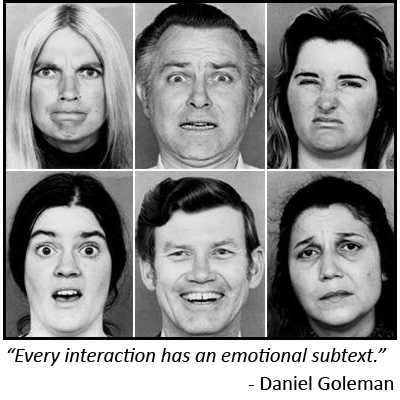Perhaps you are reading this just after returning to your desk from a “bad” meeting. You feel frustrated, or even angry, because you think your ideas were ignored and/or nothing was accomplished.
Emotions are a powerful force in our interactions. They wield more influence over the quality of our meetings than any other variable. They can turn a conversation among colleagues or neighbors either into a snarling, polarizing, and enervating event or into a joyful, bonding, and renewing one. When emotions are a bane, they disturb our equilibrium and activate the more primitive parts of the brain. And, because fear and anger are especially contagious, they can easily instigate destructive and unproductive meetings.
However, when emotions help us connect with one another and create a sense that we are all in this together, they can be a boon. When we begin to trust one another, we increase the levels of oxytocin in our systems making it possible for more trust and compassion among us. Known as the “trust” or “love” hormone, this neurotransmitter promotes positive human interactions.
We all have emotions, but what exactly are they? In Paul Ekman’s, ground breaking work on emotions, “Emotions Revealed,” he defines them as, “a process, a particular kind of automatic appraisal influenced by our evolutionary and personal past, in which we sense that something important to our welfare is occurring, and a set of psychological changes and emotional behaviors begins to deal with the situation.”
The “automatic appraisal” to which Ekman refers is the brain’s vigilant and constant scanning of any situation we are in to assess its potential impact on our wellbeing. “Evolutionary and personal past” pertains to the fact that the human brain evolved to keep us alive and that memories of events that threatened our survival in the past get cued up by similar events today. If you felt humiliated as a child in a public setting such as a classroom, any hint of a threat of embarrassment in a meeting now can evoke the same emotions of shame or embarrassment you felt as a child.
Although our survival is rarely at stake in a meeting, we can feel as if it is. Seemingly innocuous behaviors can evoke fear or anger and self-protective behaviors in any of us. Notice how you feel when someone interrupts you; or your ideas are not heard, are dismissed or criticized; or when someone makes an authoritative and patronizing pronouncement that implies “You just don’t get it; here’s what’s really going on.”
These behaviors can trigger the amygdala or alarm bell in the limbic region and your body will start to bring out the National Guard of protective devices including arguing, placating, or “checking out.” In a flash you can find yourself backing off what you’ve said or interrupting, dismissing, or criticizing those who just did the same to you. Such tit for tat actions crush the life out of conversations. They hurt us in three ways. They turn us into enemies who will find it harder to work together effectively in the future. They prevent us from understanding what the issues at hand really are and finding good solutions for them. Finally, overtime, they insidiously undermine our ability and confidence in working together.
It takes a lot of attention and awareness to choose a path other than returning fire when fired upon. Here is one tool to help you do this: feet-seat-breath. Try this right now. It will take less than a minute.
Pause. Sense your feet on the floor and your seat on the chair. Bring your full attention to three breaths noticing the slight pause between your exhale and inhale. What are you aware of in your body? Perhaps a slight holding in your neck and shoulders? Some pressure in your forehead? Do these change as you become aware of them with a non-judgmental, kind acceptance?
It is an intriguing paradox that the body is both the vehicle and the antidote for being emotionally hijacked.


1 thought on “Emotions: the bane or the boon of our meetings”